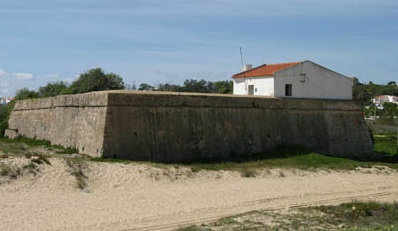The  Minister of the Economy, Manuel Caldeira Cabral, explained today the government’s latest plan to offer degraded national monuments to private businesses on 30-50 year leases to be run as tourism businesses.
Minister of the Economy, Manuel Caldeira Cabral, explained today the government’s latest plan to offer degraded national monuments to private businesses on 30-50 year leases to be run as tourism businesses.
In addition to allowing the private sector to get its hands on some of Portugal's most important monuments, the government has set aside a fund of €150 million which successful bidders can access to renovate these buildings and turn them into tourist attractions.
Unused and in need of work, 30 State-owned buildings are to be turned over to private management in the ‘Revive programme, an initiative launched by the Ministries of the Economy, Culture and Finance.
The first phase of 12 buildings to be released into public hands will be followed by a further 18 for which the State intends to grant concessions, also for periods of between 30 to 50 years.
The Revive programme will turn ‘abandoned’ monuments in tourist sites so as to "monetise and renovate the buildings and open them up to citizens, using private funds," Cabral explained to journalists, adding that “instead of being a cost, this can be something that brings more value to Portugal and helps create jobs and affirms the country as a tourist destination."
Cabral stressed that it was "urgent and important" to save these buildings, adding that due to the appalling state they are in, any further delays will mean further degradation. The credit line will help those "investments that may have longer payback periods and are ‘sustainable’."
The list includes the Mosteiro de Santa Clara-a-Nova, the Fortaleza de Peniche, the Castelo de Vila Nova de Cerveira, the Forte do Guincho in Cascais, the Paço Real de Caxias in Oeiras, the Convento de São Paulo in Elvas, the Mosteiro de São Salvador de Travanca in Amarante, the Mosteiro de Arouca, the Pavilhão do Parque in Caldas da Rainha, the Castelo de Portalegre, the Forte de S. Roque da Meia Praia in the Algarve and the Quinta do Paço de Valverde, Évora.
Some of the monuments mark significant events in Portugal’s history such as the fort in Peniche which served as a prison for opponents of the Salazar regime during the Novo Estado period.
Current responsibility for the list 30 buildings is shared between various ministries which have one characteristic in common, the lack of interest and lack of past effort put in to maintaining these public monuments. All, conveniently, are classified as in "a bad state of repair," by the Directorate General of Heritage and Culture whcih has made no comment on the Revive programme.
The Secretary of State for Tourism, Ana Mendes Godinho, appeared delighted and with the prospect of more foreign travel, gushed, "We will start an international roadshow to attract investment" for Revive, adding that her office has already been contacted by Portuguese and foreign hotel groups interested in the scheme.
The Communist party is livid at this plan, especially the inclusion of the Fort in Peniche which was a political prison that housed militant communists such as Álvaro Barreirinhas Cunhal who made his famous escape in 1960.
Forte de São Roque , Meia Praia, Lagos

On the full list, but scheduled for stage two, is the Forte de S. Roque da Meia Praia in Lagos which as recently as 2014 was listed as a 'monument of public interest.'
The Forte de São Roque, or São José, but known locally as the Forte de Meia Praia in Lagos was listed in a decree signed by the then-Secretary of State for Culture, Jorge Barreto Xavier.
The fort lies strategically in the centre of the bay of Lagos and was one of the coastal defences. The 840m2 fort was built between 1671 and 1675 in the face of constant attack from pirates in their swift corsairs keen to plunder and to nab locals to be sold as slaves.
The Forte de São Roque is one of the early modern forts around the Algarve's coastline. There remain 44 forts and ex-forts from Alcoutim in the east to Arrifana in the west.
The structure was ruined in the 1755 earthquake and was rebuilt from 1796 in the face of the threat from France. By 1822 the fort was listed as 'completamente vazio e destruido’ (completely abandoned and destroyed.)
Throughout the twentieth century there were several attempts to rescue the building from ruin and to develop its tourist potential. These efforts were not helped by a total lack of interest from the government.
In 2007, Lagos council asked the Ministry of Defence to transfer the fort to municipal management with the aim of carrying out improvement works and to put the building to some use. This request was made due to the advanced state of neglect and degradation of the monument.
The fort latterly was used as a customs post until the municipality came forward with a number of ideas for possible uses of the building such as installing a maritime museum, a summer camp, an eco-activity centre but nothing happened and in 2009 the Ministry of Culture included the Forte da Meia Praia in a list of monuments that needed urgent intervention work.
The classification of the Forte de São Roque went through a long process of public hearings and technical advice and accorded with the criteria to qualify it for a building of cultural heritage including aesthetic value, architectural design, its landscape, and the fact that it is known and recognised as an important structure.
However, the fort’s inclusion on the Revive ‘for sale’ list means all of the work that has been undertaken to preserve the fort as a public monument has been a waste of effort.






















